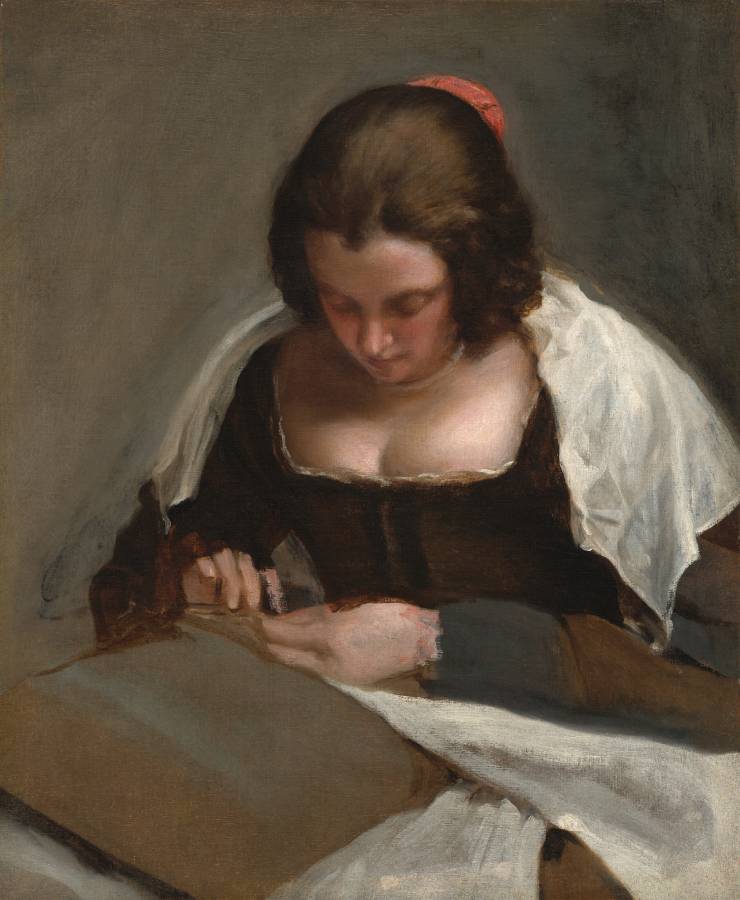Velázquez, Diego (1599-1660)
La costurera (The Needlewoman)
c.1640–1650
Oil on canvas, 74 x 60 cm
National Gallery of Art, Washington
Diego Velázquez ranks among the greatest masters of seventeenth-century Europe. By 1623, the twenty-four-year-old artist was established as court painter to Philip IV in Madrid. For nearly forty years, he was primarily occupied with painting remarkably innovative portraits of the monarch and the royal family. But in his spare hours, Velázquez turned to subjects that interested him personally; The Needlewoman is among those works. His observation of the optical effects of light on the forms he painted caused Velázquez to abandon the tenebrism — or extreme contrast of lights and darks — that characterized his earlier works in favor of a softer style. Here, no area is obscured by darkness. The artist used a gentle light and deep, but translucent, shadow to reveal each plane of the face, to sculpt the swelling bosom, and to suggest the repetitive motion of the hand. Because the painting remains unfinished, the steps in the artist’s process are visible. He began by priming the canvas with a gray-green base. Next, he indicated the main forms of the composition, sketching them in with darker paint, then brushing them in with broad areas of opaque color, and finally, building up the face — the only area that appears to be finished — with transparent layers of glaze, giving it the effect of flesh seen through softly diffused light. Shown from the waist up, a woman with pale skin and brown hair, wearing a dark corset and white fabric over her shoulders, looks down at needlework in her hands in this vertical painting. Her cheeks are rosy and her dark hair is pulled back, though it seems looser down the sides of her face. A small, coral-red, crescent shape at the back of her head could be covering her hair or holding it in place. White, nearly translucent fabric lies loosely across her shoulders over a dark, moss-brown, long-sleeved dress. Her breasts swell over the squared, lace-trimmed neckline. She holds white fabric and perhaps a needle in her hands, which rest on a tan cushion on her lap. The scene is loosely painted throughout so some of the details are difficult to make out. A darker spot along her right index finger could be a thimble. The background is the same olive-tan of the cushion. (NGA)
